One of the most incredible woodpecker facts is that almost everywhere you go, people recognize the sound of a woodpecker. These wood-boring birds live just about everywhere, and, there are 180 unique species. All woodpeckers belong to the Picidae family of birds, and they all share a few stunning characteristics.
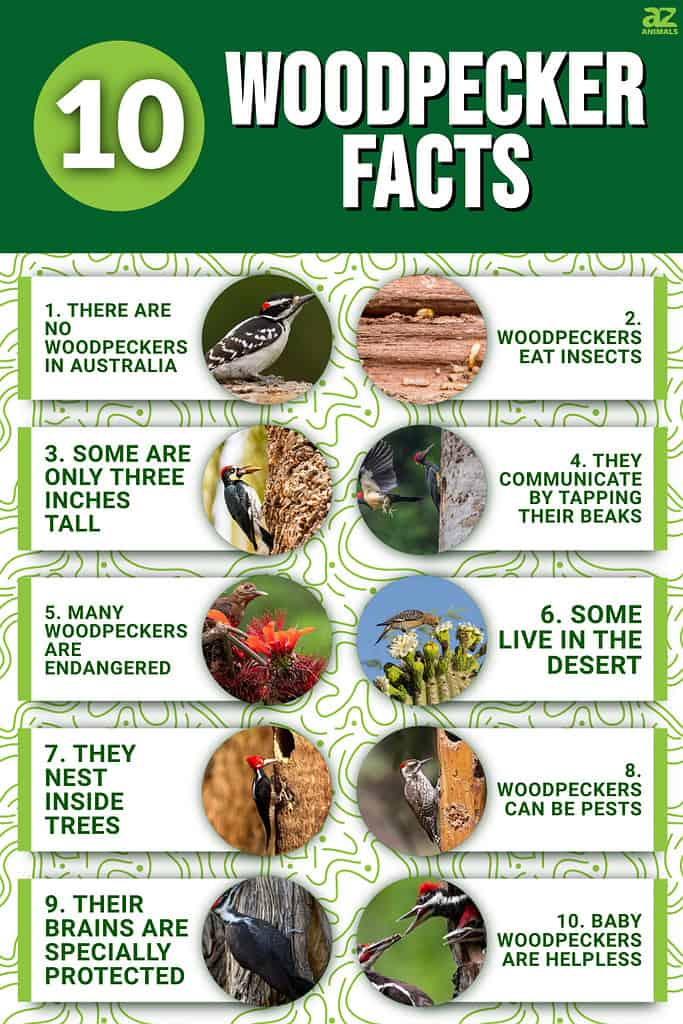
Here, we’ll discover ten fascinating woodpecker facts. By the end of this article, you’ll know just a little more about the birds we call woodpeckers.
1. There Are No Woodpeckers in Australia
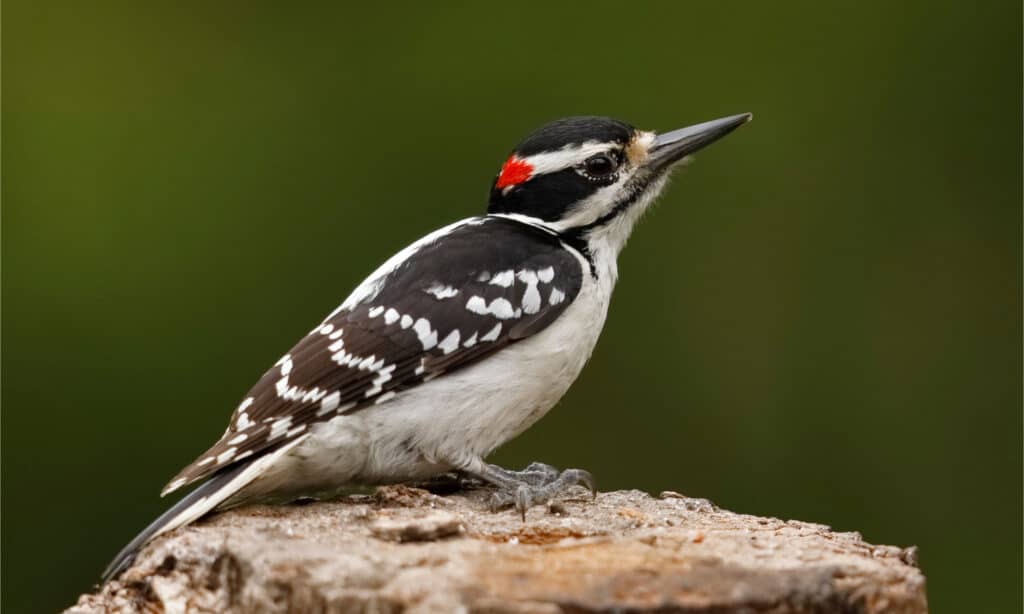
There are no woodpeckers in Australia. They’re also absent from Madagascar, New Zealand, New Guinea, and the North and South
polar regions
.
©Brian Lasenby/Shutterstock.com
Woodpeckers live almost everywhere. However, they’re completely absent from Australia and New Zealand, as well as New Guinea, Madagascar, and the coldest polar regions on Earth. They’re generally found in wooded areas, or in dense forests. However, these birds are incredibly good at surviving and can make their home almost anywhere, even treeless deserts.
2. Woodpeckers Eat Insects
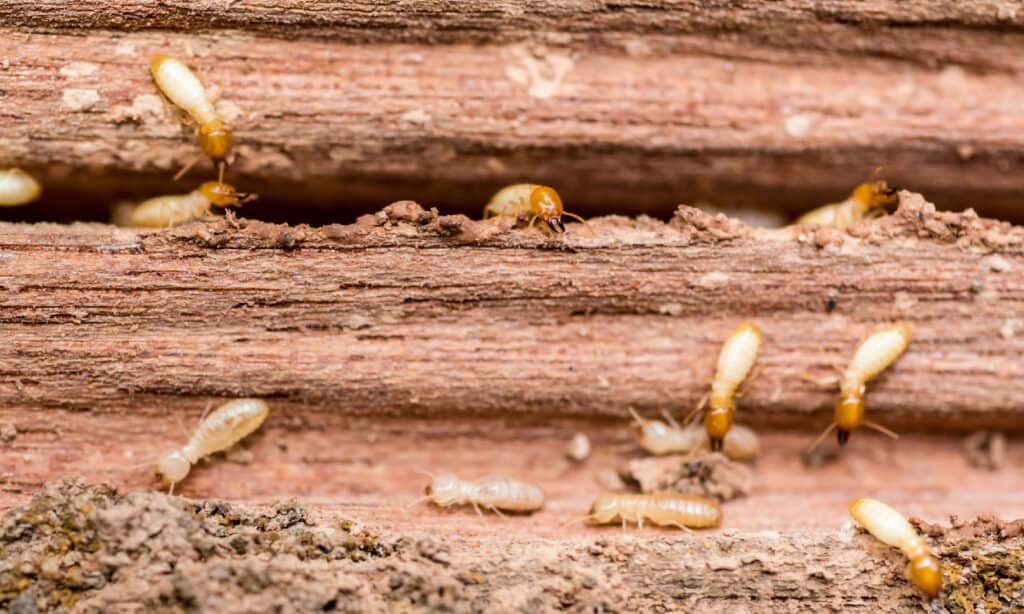
Woodpeckers bore into wood to reach insects like termites, beetles and ants.
©iStock.com/viiwee
One of the most incredible woodpecker facts is that these birds don’t peck at wood just for fun. They actually bore holes in tree bark to get at the juicy insects underneath. Woodpeckers eat beetles, ants, termites, spiders, caterpillars, fruit, nuts, and sap. But, their diet isn’t restricted only to bugs, fruit, and nuts; they also eat lizards, mice, and other small rodents, bird eggs, and baby birds. Woodpeckers are opportunistic and don’t often turn down a meal.
3. Some Are Only Three Inches Tall
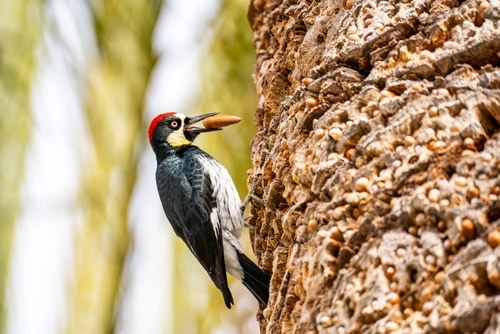
The smallest woodpeckers worldwide stand at only 3 inches tall.
©Iv-olga/Shutterstock.com
With almost 200 distinct species of woodpecker, it’s no surprise that there’s a lot of variation between species. The smallest woodpeckers in the world stand only three inches tall, while the largest can reach nearly two feet in length. The largest woodpecker alive today is the great slaty woodpecker. In the past, even larger woodpeckers, like the imperial woodpecker and the ivory-billed woodpecker, existed. But, habitat loss and hunting have led to the extinction of many species of woodpecker.
4. They Communicate by Tapping Their Beaks
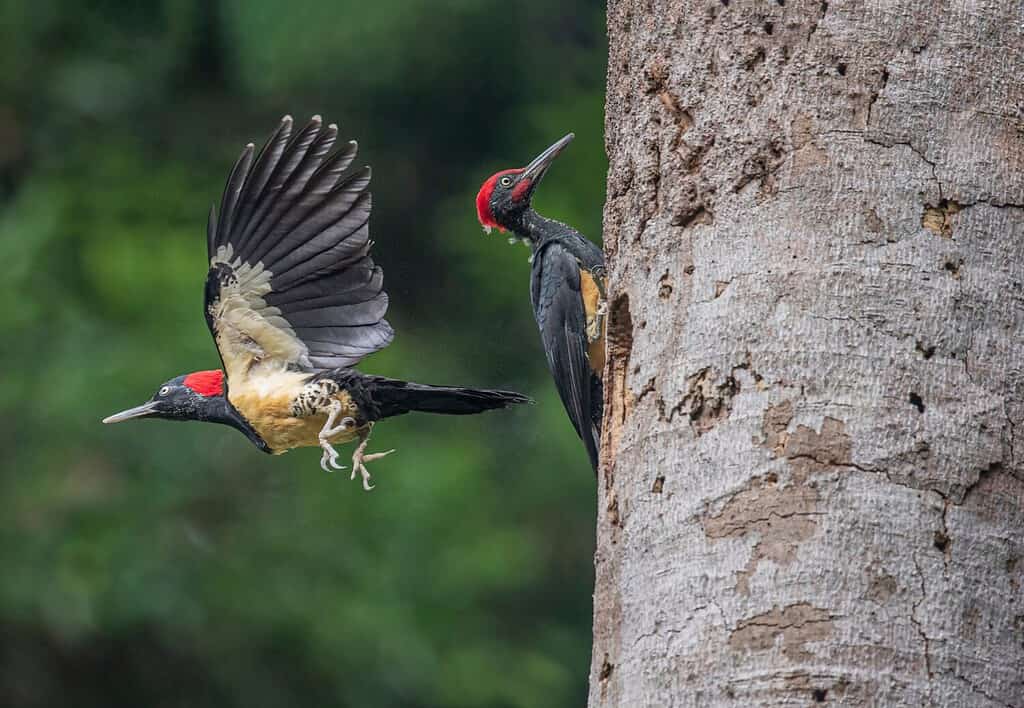
The tapping sounds that woodpeckers make, called drumming, actually contain messages for fellow birds.
©Jamil Bin Mat Isa/Shutterstock.com
We all know that woodpeckers tap-tap-tap at tree trunks to get to the insects inside. But would you believe that all that tapping actually serves a communicatory purpose too? That’s right, woodpeckers send messages to each other through the loud sounds they create by tapping on trees. This communication is known as drumming, and it’s how woodpeckers talk to each other non-vocally.
5. Many Woodpeckers are Endangered
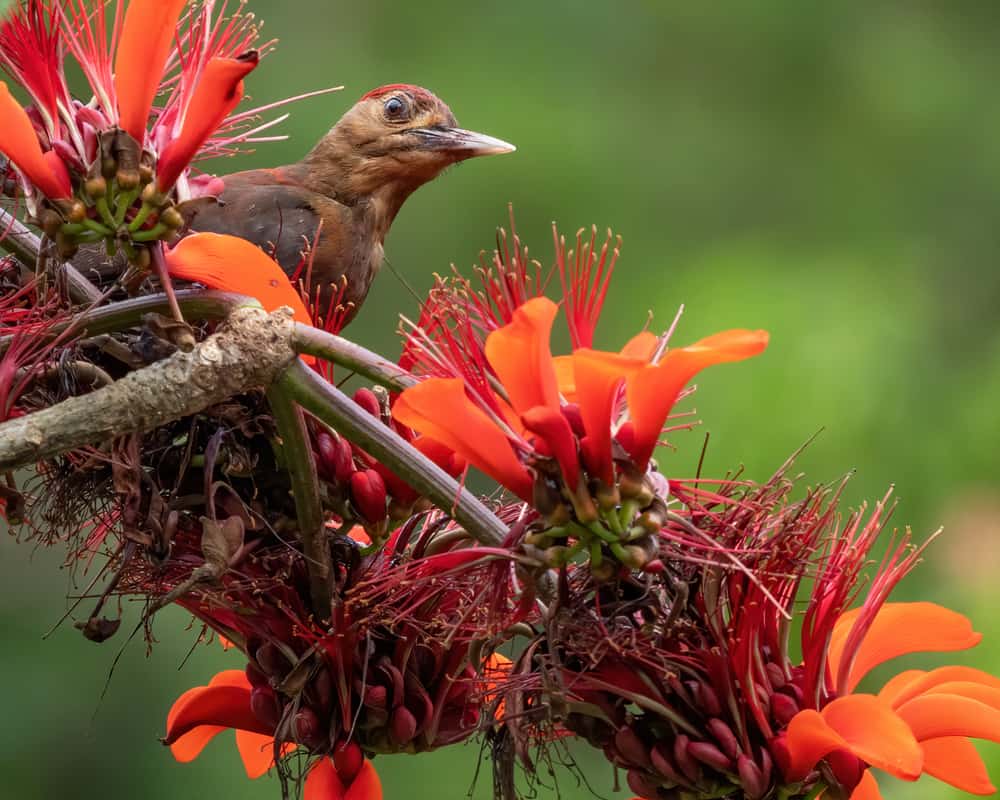
Critically endangered Okinawan woodpecker feeds on some beautiful red leaves.
©Richard Cook/Shutterstock.com
Another incredible woodpecker fact is that, although these species are doing better than many other types of birds, they’re still at risk of extinction in many places. Woodpeckers are forest birds, so, when forests are cleared, they lose their homes. Deforestation, habitat loss, habitat fragmentation, and even hunting, have all played roles in the extinction and endangerment of several woodpecker species. The Okinawa woodpecker of Japan is critically endangered, as is the red-cockaded woodpecker of North America.
6. Some Live in the Desert
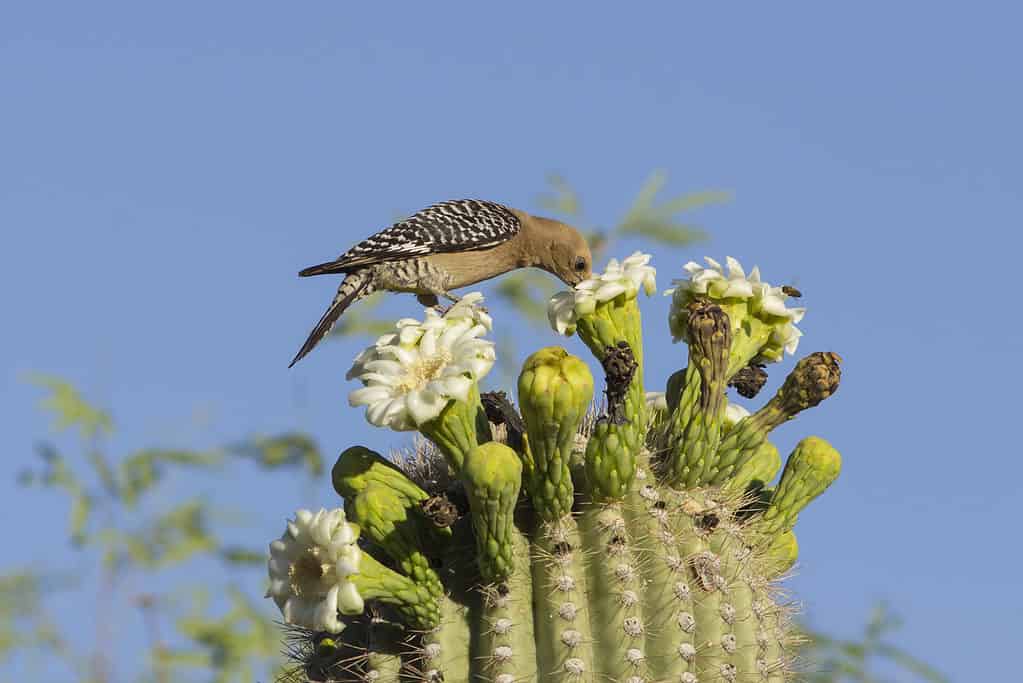
The Gila woodpecker survives by boring holes in cacti to prey on insects, worms, eggs, baby birds, and lizards.
©iStock.com/tntphototravis
Not all woodpeckers live in forests. Some actually make a living in treeless deserts. One such woodpecker is the Gila woodpecker, which lives in the desert southwest of North America, Baja, and western Mexico. These birds survive by boring holes in cacti and eating insects, lizards, worms, eggs, and baby birds. When baby Gila woodpeckers hatch, both the mother and father feed and take care of them. They may have up to three separate broods of chicks per year.
7. They Nest Inside Trees

Woodpeckers rely on holes in tree trunks for shelter. If there are no trees available, they peck holes in whatever they can, including telephone poles, termite mounds, cacti, or even hillsides.
©silentstock639/Shutterstock.com
Another incredible woodpecker fact is that woodpeckers don’t just peck at trees for food. They also use their incredible beaks to bore out nest-sized holes far up in the safety of tree trunks. Once the hole is ready, females lay their eggs inside. Baby woodpeckers spend the first few weeks of life safely ensconced in holes bored in tree or cacti trunks.
8. Woodpeckers Can be Pests
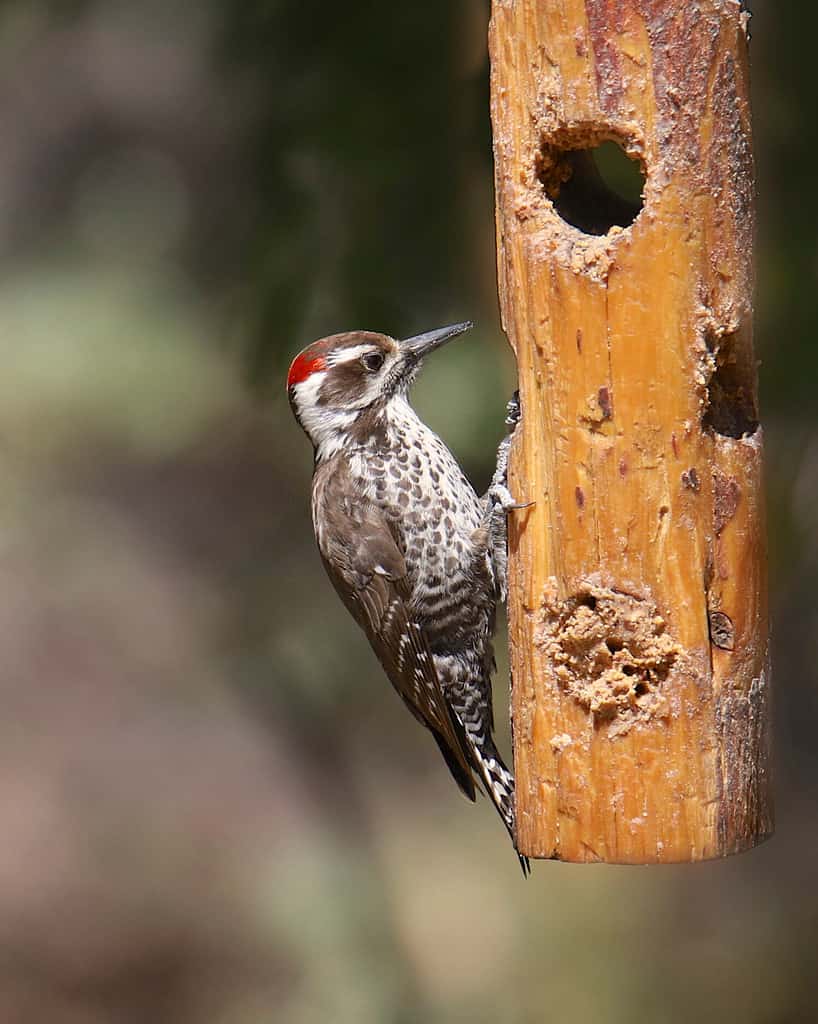
Homeowners sometimes view woodpeckers as pests due to their predilection to bore holes.
©vagabond54/Shutterstock.com
In general, people love and enjoy the presence of woodpeckers. Many species have colorful, tufted heads, and can be a joy to see out in the woods. However, not all woodpeckers are as welcome when it comes to homes, fences, barns, and power poles. Because of their predilection for boring holes, woodpeckers can become a nuisance for homeowners. This is particularly true if woodpeckers have lost their forest habitat, and have nowhere left to turn to raise their young but the sides of homes and other buildings.
9. Their Brains are Specially Protected

Woodpeckers have evolved to peck wood. To protect their brains from the repetitive impact, they’ve evolved some pretty cool features.
©FotoRequest/Shutterstock.com
One incredible woodpecker fact has to do with the way their skulls and brains are built. Because woodpeckers spend so much of their lives furiously tap-tap-tapping away at wood, they have to have special mechanisms to protect their brains from injury. Woodpeckers drum their beaks against wood 500-600 times per day, but don’t seem to get concussions, headaches, or permanent brain injury. Scientists are currently studying just how woodpeckers achieve this. The answer could advance medical science to help protect future human brains too.
10. Baby Woodpeckers Are Helpless

Baby woodpeckers are altricial, which means they can’t do anything for themselves for the first 20-30 days of life.
©iStock.com/Harry Collins
When it comes time to lay their eggs, mother woodpeckers choose a nice tree hole high off the ground. The eggs incubate for up to two weeks. Then, tiny, helpless, underdeveloped baby woodpeckers emerge, ready for feeding. Baby woodpeckers are altricial, which means they can’t do anything for themselves for the first 20-30 days of life. Some species of birds, like chickens and ducks, have precocial chicks that can walk and feed themselves within hours of birth. But not the woodpecker. Like songbird chicks, woodpecker chicks are completely dependent on their mothers for at least three weeks.
The photo featured at the top of this post is © iStock.com/impr2003
Thank you for reading! Have some feedback for us? Contact the AZ Animals editorial team.






